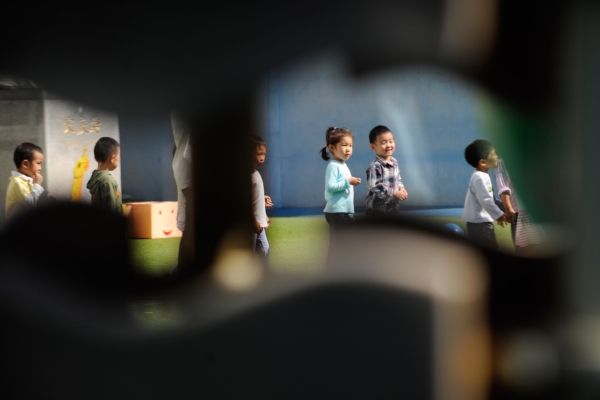China is facing a population crisis, with a declining birth rate and an aging population leading to enrollment difficulties for kindergartens. Many kindergartens have been forced to close down, resulting in a decrease in the number of kindergartens for three consecutive years. Some kindergartens have been transformed into nursing homes, while in some areas, the “co-caring for the elderly and young” model is being experimented with.
According to the “2024 National Education Development Statistics Bulletin” released by the Chinese Ministry of Education, the number of kindergartens has decreased for three consecutive years. In 2022, there were over 5,600 fewer kindergartens, in 2023, over 14,000 fewer, and in 2024, over 20,000 fewer. In 2024, there were 253,300 kindergartens nationwide, with a total of 35.8399 million children attending, a decrease of about 5 million from the previous year.
Reports in mainland China point out that changes in the birth population in recent years have led to fluctuations in the number of kindergartens.
Data released by the Chinese National Bureau of Statistics shows that the birth population in 2024 reached 95.4 million, compared to 90.2 million in 2023, 95.6 million in 2022, and 106.2 million in 2021.
Research conducted by the Michael Consultancy Group analyzed the peak birth rates over the past 20 years and compared them with the data from 2024. The results showed that the peak birth rates in various provinces were concentrated in 2016 and 2017, followed by a general decline. Shandong, known as the “most fertile” province, witnessed a 63% decrease. Population giants like Hunan, Hubei, Anhui, Jilin, Jiangxi, and Fujian also experienced significant declines ranging from 50% to 60%.
Despite a slight increase in the number of newborns in China in 2024, many kindergartens are still facing difficulties in enrollment, leading to a wave of kindergarten closures and forcing preschool teachers to seek other careers.
Renowned Chinese demographic scholar Zhang Jiadun once wrote in a publication that the reasons for China’s declining population are deep social changes, ongoing economic decline, and deepening sense of melancholy. Young people in China now refer to themselves as the “last generation.”
One of the contributing factors to the negative attitudes towards childbearing among young people is the “One-Child Policy” implemented by Deng Xiaoping in 1979. During the period of its enforcement, China’s fertility rate continuously decreased from 2.9 births per woman to 1.1 in 2015.
On the other hand, China is facing a severe aging population problem. By the end of 2024, China’s population aged 60 and above has reached 310 million, accounting for 22% of the total population; among them, those aged 65 and above have reached 220 million, accounting for 15.6% of the total population.
Reports from mainland China’s “Caixin” media outlet have highlighted that many existing kindergartens in China have been transformed into nursing homes or have adopted the “co-caring for the elderly and young” model to provide one-stop services for elderly care and childcare to residents.
One example is a well-established kindergarten in Jinhua, Zhejiang, which, after experiencing a sharp decline in enrollment in 2022 and a lack of elderly care facilities nearby, was transformed into a nursing home in 2023.
In Beijing’s Xicheng District, Desheng Street has established a new North Community Elderly Care Service Station, which officially started operating in July 2024, becoming the latest pilot project for integrated elderly care and early childhood education in Beijing.
However, the “co-caring for the elderly and young” model is still controversial. Experts point out that while elderly care services are mainly the responsibility of the civil affairs department, childcare services are mainly overseen by the health department, leading to coordination issues between the two.

